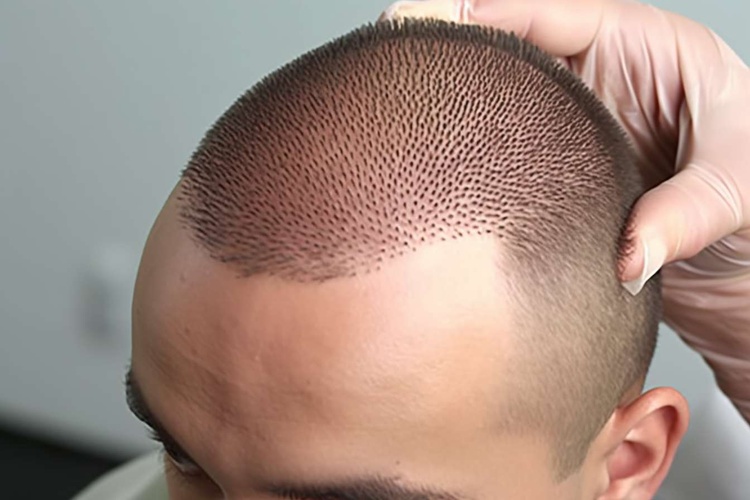Hair Transplantation: New Approaches and Modern Techniques
Hair transplantation has evolved significantly over the past decade, offering individuals experiencing hair loss more refined and effective solutions than ever before. Modern advancements in surgical techniques, technology integration, and patient care protocols have transformed this field from basic hair plugs to sophisticated restoration procedures that deliver natural-looking results with minimal downtime.

The landscape of hair restoration has transformed significantly with cutting-edge technologies and refined surgical approaches. Today’s patients benefit from precision techniques that deliver superior outcomes compared to traditional methods from just a decade ago.
What New Approaches Are Being Explored in Hair Restoration?
Several groundbreaking approaches are revolutionizing hair restoration treatments. Robotic systems now use artificial intelligence to identify and harvest the healthiest follicles with unprecedented precision. Platelet-rich plasma (PRP) therapy has gained traction as a complementary treatment that stimulates natural hair growth using the patient’s own blood components.
Stem cell therapy represents another frontier, with researchers exploring how these regenerative cells can restore dormant hair follicles. Micro-needling combined with growth factor serums offers a non-surgical alternative that shows promising results for early-stage hair loss.
Which Modern Trends Are Shaping Hair Restoration Techniques?
Current trends emphasize minimally invasive procedures with faster recovery times. The shift toward personalized treatment plans considers individual hair characteristics, scalp condition, and genetic factors. Advanced imaging technology allows surgeons to map donor areas more effectively and predict long-term results.
Another significant trend involves combining multiple treatment modalities for comprehensive care. Patients increasingly receive customized protocols that might include surgical procedures, medical therapy, and regenerative treatments tailored to their specific needs.
What Innovations Are Transforming the Field of Hair Restoration?
Technological innovations continue to reshape hair restoration procedures. High-definition microscopy enables surgeons to work with greater accuracy during follicle extraction and implantation. Automated punch tools reduce human error and improve graft survival rates.
Cryopreservation techniques help maintain follicle viability during longer procedures, while advanced closure methods minimize scarring in donor areas. Some clinics now offer virtual consultations using specialized cameras that analyze hair density and predict treatment outcomes.
Procedure Costs in 2025: What Affects the Price?
Several factors influence hair restoration costs in 2025. Geographic location plays a significant role, with procedures in major metropolitan areas typically commanding higher fees. The extent of hair loss determines the number of grafts needed, directly impacting the total cost.
Technique selection also affects pricing, as newer methods often carry premium charges. Surgeon experience and clinic reputation contribute to cost variations, while additional services like PRP therapy or follow-up treatments add to the overall investment.
| Procedure Type | Average Cost Range | Grafts Included | Recovery Time |
|---|---|---|---|
| FUE Method | $4,000 - $15,000 | 1,000 - 3,000 | 7-10 days |
| DHI Technique | $5,000 - $18,000 | 1,000 - 3,000 | 5-7 days |
| Robotic FUE | $8,000 - $20,000 | 1,500 - 4,000 | 7-10 days |
| Traditional FUT | $3,000 - $12,000 | 2,000 - 4,000 | 10-14 days |
Prices, rates, or cost estimates mentioned in this article are based on the latest available information but may change over time. Independent research is advised before making financial decisions.
FUE vs. DHI: Which Method Offers Better Value for Money?
Follicular Unit Extraction (FUE) and Direct Hair Implantation (DHI) each offer distinct advantages that affect their value proposition. FUE provides excellent results at a lower cost point, making it accessible to more patients. The technique involves extracting individual follicles and creating recipient sites before implantation.
DHI commands higher fees but offers potentially superior precision and faster healing. This method implants follicles directly without pre-made incisions, reducing handling time and potentially improving graft survival rates. The choice between methods depends on individual budget constraints, desired outcomes, and surgeon recommendations.
Patients should consider long-term value rather than just initial costs. Factors like revision rates, natural appearance, and maintenance requirements influence the overall investment. Consulting with qualified surgeons helps determine which approach offers the best value for specific circumstances.
The future of hair restoration continues to evolve with ongoing research into gene therapy, tissue engineering, and advanced biomaterials. These developments promise even more effective solutions for addressing hair loss while maintaining the natural aesthetics that patients desire. As techniques become more refined and accessible, individuals facing hair loss have increasingly viable options for restoration.
This article is for informational purposes only and should not be considered medical advice. Please consult a qualified healthcare professional for personalized guidance and treatment.




